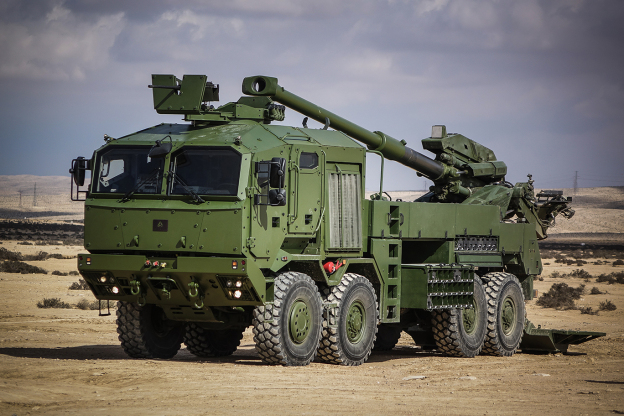
The Brazilian Army is seeking proposals for truck mounted artillery systems. The intent is to initially acquire two systems for evaluation. This could be followed by the purchase of an additional thirty-four systems.
The truck artillery will replace current M114A1 towed howitzers in service and will be provided to three army artillery units. The project is an element of the country’s “VBCOAP 155mm SR” Program to improve its forces. The plan was originally identified in January 2022 on “InfoDefensa’s” web site.
The objective is to provide both artillery with greater mobility than the current towed howitzers and capability to reach targets at ranges of 40 km. These truck guns are understood to be intended for support of Brazil’s mechanized forces. The Army also has tracked M109A3 and M109A5+ self-propelled howitzers, however, these are both heavier and less deployable. Truck mounted artillery is particularly well suited to rapid redeployment over roads and highways including long distance road marches. Their truck chassis also require less maintenance and support.
The published Brazilian Army requirements include a howitzer at 155 mm calibre capable of utilizing existing ammunition but with a maximum range of 40 km. Two companies which both have proven fielded systems have reportedly already responded to the Army’s request.
Israel’s Elbit Systems’ ATMOS 2000 which uses a 155mm/52 calibre gun mounted on a 6×6 tactical truck chassis. It uses automated loading and computer-controlled laying system offering a rate of fire of four to nine rounds per minute. It is in used with ten armies and was recently selected by the Colombian Army as well.

France’s Nexter CAESAR is offered both for integration in 6×6 and 8×8 tactical trucks. It is reported that the Brazilian defence firm AVIBRAS and Nexter may be discussing collaborating with n the project. Their approach could utilize the truck chassis utilized in the Astros Mk6 multiple rocket launcher system already in service with the Army.
Nexter would supply the 155mm gun, mount and associated systems from CAESAR which AVIBAS would integrate. CAESAR is in service with ten armies and seen combat use. Its platform adaptability has been illustrated on at least four different truck chassis. It is designed for a crew of five with integrated navigation and positioning, assisted loading, automated laying and set-up in sixty seconds and displacement in forty. The 52-caliber cannon offer a range of 42 km with Extended Range Full Bore (ERFB) ammunition and 50 km using rocket assisted.
The Brazilian Army acquisition follows a growing trend toward truck mounted artillery by many world armies. Originally these were primarily a replacement for towed howitzers that provided greater tactical mobility and the ability to shoot-and-scoot supporting motorized and light forces. They have been appreciated by armies facing operations in areas with less developed road and bridge networks and by expeditionary forces. However, increasingly they are being viewed as a complement or even substitute for some tracked self-propelled howitzers. The benefits of their typically lower initial and operating and maintenance support costs being major influencing factors. Illustrating this is Russia’s Rostec defence company announcement of its contract to produce 2S43 Malva 155mm truck howitzers for the Russian Army.
by Stephen W. Miller












